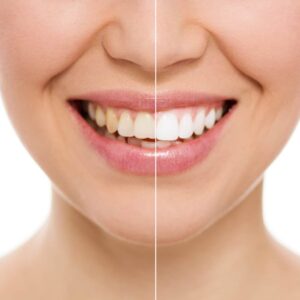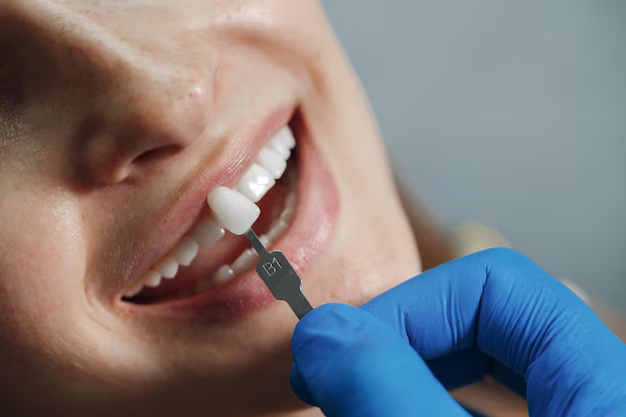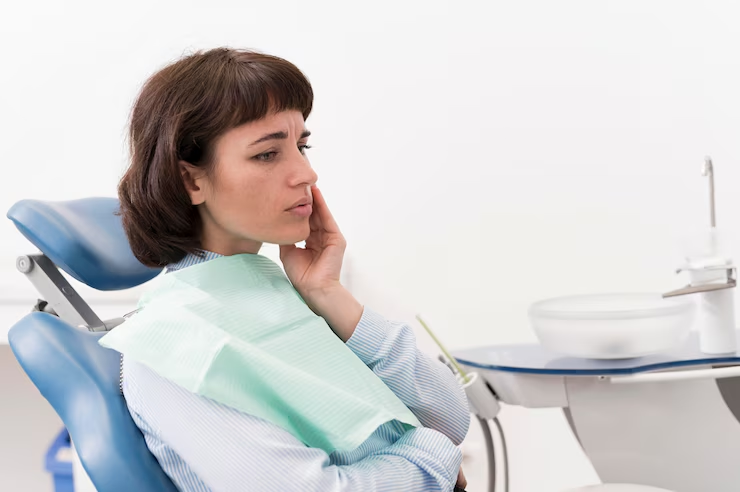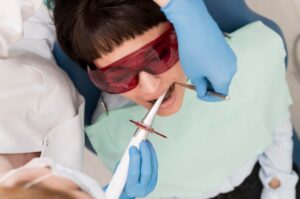A dental emergency is any situation involving the teeth, gums, or mouth that requires immediate attention. This can range from a cracked tooth to a severe toothache or an injury to your mouth. Knowing how to handle a dental emergency at home is crucial for two main reasons. First, it helps manage pain and discomfort before you can reach a dentist. Second, it can prevent further damage or complications that could lead to more severe health issues.
In this blog post, we will provide an overview of how to manage a dental crisis at home. We will discuss different scenarios of dental emergencies, home remedies for dental emergencies, and tips on how to handle these situations. We’ll also delve into the proper steps to take when dealing with tooth emergencies at home, and how to create an at-home dental emergency care kit.
As we navigate through these sections, we’ll provide practical and easy-to-follow dental emergency handling tips that can be applied at home. Remember, while these home solutions for dental emergencies can be helpful, they are not a substitute for professional dental care. Always seek professional help in case of a dental emergency.
The knowledge you’ll gain from this blog will equip you with the skills needed for responding to a dental crisis at home and potentially save a tooth or prevent a minor issue from turning into a major one.
Stay tuned as we dive deeper into the world of at-home dental crisis management.
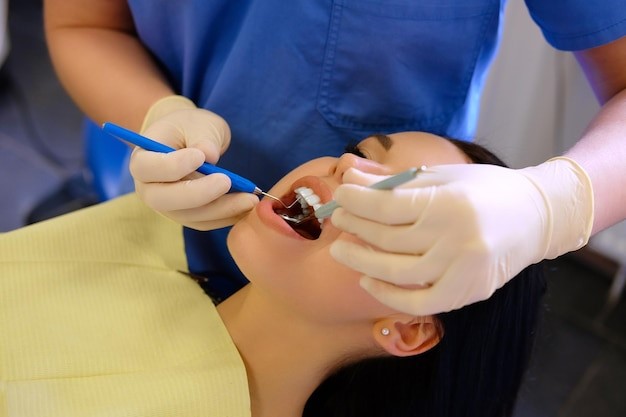
Understanding Dental Emergencies
When talking about dental emergencies, it’s essential to first understand what exactly constitutes such a crisis. A dental emergency is a situation where immediate attention is needed to alleviate severe pain or treat a high-risk condition affecting the oral cavity. This may include not only instances that involve acute discomfort but also cases that, if not treated promptly, could lead to more serious complications.
Among the common dental emergencies that one might encounter, severe toothache tops the list. This can be a result of various conditions, such as advanced dental decay, an abscess, or an impacted tooth. Another dental emergency is a knocked-out tooth, which needs immediate care to increase the chances of successful re-implantation. A chipped or broken tooth also falls under dental emergencies, particularly if it causes pain or leads to sharp edges that can injure the tongue or cheeks.
An abscess or swelling in the mouth, often accompanied by severe pain, is a clear indication of a dental emergency. This condition may signify a significant infection that can spread to other parts of the body if not treated immediately. Finally, a lost dental filling or crown is another type of dental emergency. While it may not always cause immediate discomfort, it can expose the tooth to damage and decay, requiring prompt attention.
In the context of managing a dental crisis at home, it’s important to note that home remedies can provide temporary relief. However, they are not a substitute for professional dental care. Thus, while dealing with tooth emergencies at home, it’s crucial to seek professional help as soon as possible to ensure appropriate treatment and prevent further complications.
Preparing for Dental Emergencies
Given the unpredictable nature of dental emergencies, it is wise to be proactive in managing potential dental crises at home. An essential part of dealing with tooth emergencies at home entails creating a dental first aid kit and having your dentist’s number readily available.
Dental First Aid Kit:
Your dental first aid kit should include items such as oral pain relievers, dental wax or temporary filling material, dental floss, and a small flashlight. Keeping these items handy can provide immediate relief and aid in handling oral emergencies at home until professional help can be sought.
Dentist’s Number:
Having your dentist’s number readily available is crucial in any dental emergency management at home. Whether it’s a sudden toothache or a knocked-out tooth, your dentist can guide you with the necessary steps over the phone.
Learn Basic Dental First Aid:
Knowing basic dental first aid can significantly aid in coping with dental emergencies at home. This might include learning how to handle a knocked-out tooth or how to apply a temporary filling.
Regular Check-ups:
Regular dental check-ups can help in preventing many dental emergencies. Early detection of potential issues can save you from a lot of pain and hassle.
Healthy Diet and Oral Hygiene:
Maintaining a healthy diet and practicing good oral hygiene can prevent many dental problems, reducing the chances of experiencing a dental emergency.
By preparing in advance, you can effectively respond to dental crises at home, ensuring the best possible outcome until professional help arrives.
Handling a Knocked-Out Tooth
Handling a knocked-out tooth at home can be a nerve-wracking situation, but knowing the right steps to take can significantly improve the tooth’s chances of successful re-implantation. It’s crucial to manage this dental emergency promptly and effectively. Here’s a step-by-step guide on how to handle this at-home dental emergency:
Step 1 – Pick Up the Tooth: Handle the tooth by the crown (the top part), not the root (the bottom part). This reduces the risk of causing further damage to the root.
Step 2 – Rinse the Tooth: Rinse the tooth gently under cold water to clean it. Do not scrub it or remove any tissue fragments attached to it.
Step 3 – Attempt Reinsertion: Try to replace the tooth back in its socket. If you can, hold it in place with a clean cloth or gauze.
Step 4 – Store in Milk: If you cannot reinsert the tooth, place it in a cup of milk to keep it moist. This helps maintain the right conditions for the tooth until you can see a dentist.
Step 5 – Seek Dental Care Immediately: Reach out to your dentist as soon as possible. The quicker the tooth is re-implanted, the higher the chances of its survival.
Remember, handling oral emergencies at home is only a temporary solution. Always seek professional help in a dental emergency to ensure the best outcomes.
Dealing with Chipped or Broken Teeth
Chipped or broken teeth are common dental emergencies that can occur due to accidents, falls, or while eating hard food. Here are some guidelines on managing such an emergency at home:
Rinsing the Mouth: The first thing to do is to rinse your mouth with warm salt water. This can help in cleaning the area and reducing the risk of infection.
Applying a Cold Compress: Apply a cold compress to the face in the area of the broken tooth. This can help in reducing swelling and providing some pain relief.
Preserving the Broken Piece of Tooth: If you can find the broken piece of tooth, rinse it carefully and preserve it. Store it in a clean container with a lid, and cover it with milk or saliva. This can be useful if the dentist is able to reattach the broken piece.
Immediate Dental Attention: Even though you can take some initial steps at home, it is critical to seek professional dental help as soon as possible. A chipped or broken tooth can lead to more severe dental issues if not treated promptly.
Remember, dealing with tooth emergencies at home should be a temporary measure. It’s always best to consult with a professional for at-home dental emergency care. Proper dental emergency management at home can mitigate the immediate crisis, but the ultimate solution lies in professional dental care.
Managing Lost Dental Fillings or Crowns
When dealing with tooth emergencies at home, one of the common scenarios you might face is a lost dental filling or crown. This can be a dental crisis that needs immediate attention. Until professional dental help can be received, there are a few home remedies for dental emergencies that you can use.
Firstly, over-the-counter dental cement can be a solution for both fillings and crowns. This is a temporary fix that can help protect your tooth and alleviate discomfort. If dental cement is not available, sugar-free gum can be used in case of lost fillings. Chew the gum and place it into the cavity, but be careful not to chew on the affected tooth to avoid further damage.
For lost crowns, toothpaste or denture adhesive can be used as a temporary binding agent. Before applying, clean the crown and dry both the crown and your tooth. Apply the adhesive to the inner surface of the crown and place it over your tooth. Remember, these are temporary solutions, and you should seek professional dental help as soon as possible.
In all these scenarios, managing the dental crisis at home should be followed by seeking immediate professional help. These at-home dental emergency care tips are only meant to provide temporary relief and protection for your tooth. It’s crucial to make an appointment with your dentist and have the lost filling or crown properly treated to avoid further complications.
Recognizing and Responding to Dental Abscesses
An often overlooked yet serious dental emergency at home is a dental abscess. A dental abscess is a pocket of pus in the tooth caused by an infection and can lead to severe, persistent toothache, sensitivity to hot and cold temperatures, and even fever. Identifying an abscess early can prevent the infection from spreading and causing more serious health problems.
Here are some key points to remember when dealing with a potential dental abscess:
Symptoms of a Dental Abscess: Symptoms may include a throbbing toothache that can radiate to your jaw, neck, or ear, sensitivity to hot and cold temperatures, fever, swelling in your face or cheek, and tender, swollen lymph nodes under your jaw or in your neck.
Home Solutions for Dental Emergencies: While a dental abscess requires immediate professional dental help, a mild saltwater solution can provide temporary relief. Rinse your mouth thoroughly with this solution several times a day.
The Importance of Professional Help: At-home dental emergency care can only go so far when dealing with a dental abscess. Due to the severity of this condition, it’s crucial to seek immediate professional dental assistance. Left untreated, a dental abscess can lead to a potentially life-threatening infection.
Preventing Dental Abscesses: Regular dental check-ups, maintaining oral hygiene, and avoiding sugary foods can help prevent dental abscesses. If you experience any symptoms of a dental abscess, remember the importance of managing dental crisis at home and seek professional help immediately.
When it comes to handling oral emergencies at home like a dental abscess, it’s best to be prepared and aware. Remember, the goal is not to replace professional treatment, but to manage the emergency until you can see a dentist.
The Role of Over-the-Counter Medications
When dealing with tooth emergencies at home, over-the-counter medications often play a crucial role in managing dental crisis. These medications, available without a prescription, can provide immediate, temporary relief from pain and discomfort associated with dental emergencies. Common examples include pain relievers, such as ibuprofen or acetaminophen, and topical oral gels or ointments that numb the area and reduce inflammation.
However, it’s important to remember that these are temporary solutions and are not meant to replace professional dental care. They can help in handling oral emergencies at home, but they do not address the underlying problem causing the pain. For instance, a severe toothache might be symptomatic of a dental abscess or a deep decay that requires professional treatment. Using over-the-counter medications to simply mask the pain might delay necessary treatment and potentially exacerbate the condition.
While these medications can be effective in coping with dental emergencies at home, always follow the instructions on the packaging and avoid exceeding the recommended dosage. Overuse could lead to unwanted side effects or even serious health risks. Moreover, if the pain persists or worsens even after using these medications, it is a clear sign that you should seek professional dental care immediately.
Remember, over-the-counter medications are a part of at-home dental emergency care, not a solution. Always consult with a dental professional to ensure proper management and treatment of your dental health.
“In the face of a dental emergency at home, it’s crucial to keep calm and act efficiently. Rinse your mouth with warm water, apply a cold compress if needed, and reach out to your dentist immediately. Remember, home remedies are temporary; seek professional help as soon as possible to mitigate further damage.”
– Dr. Guneet Alag, DDS, FAGD, Fab Dental, Hayward, CA.
Conclusion
In the face of a dental emergency, knowing how to respond can make a significant difference. This blog has provided a comprehensive guide on handling oral emergencies at home, including managing a severe toothache, dealing with a knocked-out tooth, and coping with chipped or broken teeth. These home remedies for dental emergencies are only temporary measures, and they are not a substitute for professional dental care.
Understanding and effectively managing a dental crisis at home can lessen the severity of the situation and potentially prevent further damage. The home solutions discussed, such as the role of over-the-counter medications, are designed to provide immediate relief until professional help can be obtained. Dealing with tooth emergencies at home requires calm, informed decisions, and the right tools.
However, the ultimate resolution of these emergencies lies in the hands of dental professionals. The importance of professional dental care in treating these emergencies cannot be overstated. At-home dental emergency care should be seen as the first response, not the final treatment, in a dental emergency. Thus, it is crucial to seek professional help promptly, even after administering at-home dental crisis management measures.
In conclusion, being equipped with knowledge and understanding on how to handle a dental emergency at home is invaluable. However, professional dental care remains the most crucial part of treating these emergencies. So, while you can employ our dental emergency handling tips at home, always remember to follow up with a visit to your dentist.
Frequently Asked Questions
What is considered a dental emergency?
A dental emergency is a situation that requires immediate attention to save a tooth, stop ongoing tissue bleeding or alleviate severe pain. It often includes severe toothache, knocked out or broken teeth, lost dental fillings or crowns, abscessed tooth, and injuries to soft tissues of the mouth.
What should I do if I have a severe toothache at home?
If you have a severe toothache, rinse your mouth with warm water and floss to remove any food particles that may be causing the pain. If the pain persists, use over-the-counter pain relievers but avoid putting aspirin directly on the affected area. It is important to see a dentist as soon as possible.
How do I handle a knocked out tooth at home?
If a tooth is knocked out, it's important to handle it by the crown (the top), not the root, to avoid damaging the tooth. Rinse the tooth gently without scrubbing it. If possible, try to place the tooth back in its socket without forcing it. If that's not possible, put the tooth in a small container of milk, saline solution, or a cell growth medium available from a pharmacist. Seek immediate dental attention as time is a critical factor in saving the tooth.
What should I do if I break a tooth?
If a tooth is broken, rinse your mouth with warm water and apply a cold compress to the area to reduce swelling. If possible, save any pieces of the broken tooth and bring them to your dentist. Over-the-counter dental cement can be used to cover the part of the tooth that's been broken off. You should see a dentist as soon as possible.
How do I handle a lost dental filling or crown?
If a filling or crown is lost, you can temporarily fill the space with over-the-counter dental cement, denture adhesive, or even sugar-free gum to protect the area. However, these are temporary solutions and you should see a dentist as soon as possible.
What should I do if I have an abscessed tooth?
An abscessed tooth is a serious infection that can spread to other parts of the body if left untreated. Rinse your mouth with warm salt water several times a day to reduce pain and swelling. You should see a dentist immediately for treatment.
How can I handle injuries to the soft tissues of the mouth?
Injuries to the tongue, cheeks, gums, or lips can be managed by rinsing the mouth with warm salt water and applying pressure to the area with a moistened piece of gauze or tea bag to stop bleeding. A cold compress can help reduce swelling. If the bleeding doesn't stop, see a dentist immediately or go to the emergency room.
How can I avoid dental emergencies at home?
Regular dental check-ups and maintaining good oral hygiene can help prevent many dental emergencies. Also, wearing a mouthguard during sports activities, not using your teeth to open packages or cut things, and avoiding hard foods that can crack your teeth can help avoid dental emergencies.
Should I always see a dentist after a dental emergency?
Yes, even after providing first aid, it's important to see a dentist. A dentist can evaluate the extent of damage, provide professional treatment, and prevent further complications.
Can all dental emergencies be handled at home?
While initial first aid can be provided at home for many dental emergencies, professional dental care is necessary for all dental emergencies. Some situations, like an abscessed tooth, can be life-threatening if not treated professionally. Always consult a dentist after a dental emergency.

